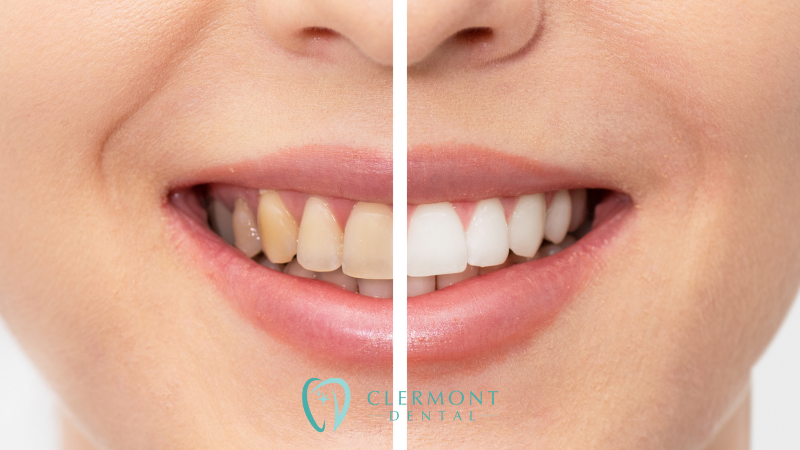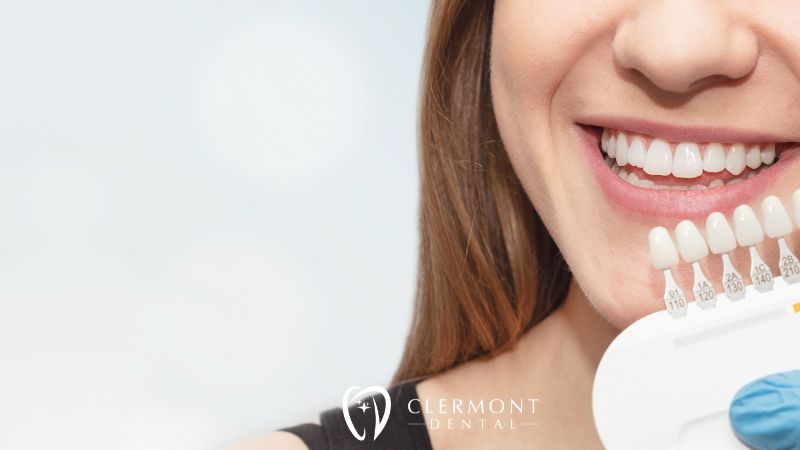Our teeth play a crucial role in our overall appearance and oral health. While everyone desires a bright and radiant smile, it is essential to understand the natural color of our teeth and the factors that contribute to their discoloration. In this blog post, we will explore what determines the natural color of teeth and delve into the various causes of tooth discoloration. By understanding these factors, you will gain valuable insights into what concerns you should and shouldn’t have when it comes to the color of your teeth.
The Natural Color of Teeth
The natural color of our teeth varies from person to person, ranging from shades of white to off-white, with a slight yellow tint. The color of our teeth is determined by the composition of the tooth structure, which consists of enamel, dentin, and the dental pulp.
Enamel, the outermost layer of the tooth, is translucent and can appear slightly yellowish. The underlying dentin, which is naturally yellow, contributes to the overall color of the teeth. The thickness and smoothness of enamel play a role in how light reflects off the tooth surface, affecting its appearance.
Causes of Tooth Discoloration:
a) Extrinsic Factors:
Extrinsic stains occur on the outer surface of the teeth and can be caused by various factors:
- Food and Drinks: Regular consumption of deeply pigmented foods, like berries, and tomato sauce, or beverages like coffee, tea, and red wine, can stain the enamel over time.
- Tobacco Use: Smoking or chewing tobacco can leave stubborn brown or yellow stains on the teeth.
- Poor Oral Hygiene: Inadequate brushing and flossing can lead to a buildup of plaque and tartar, which can discolor the teeth.
- Medications: Certain medications, like antibiotics (e.g., tetracycline) or antihistamines, can cause tooth discoloration, particularly if taken during tooth development.
b) Intrinsic Factors:
Intrinsic stains originate from within the tooth structure and can be attributed to the following:
- Tooth Trauma: Injuries that cause the death of the tooth’s nerve can result in a darkening of the affected tooth.
- Aging: As we age, the enamel naturally becomes thinner, revealing more of the yellowish dentin.
- Genetics: Some individuals may have naturally darker or less opaque enamel, contributing to a darker appearance of their teeth.
- Fluorosis: Excessive ingestion of fluoride during tooth development can lead to white spots or streaks on the teeth.
- Dental Restorations: Certain dental materials, such as metal-based crowns or amalgam fillings, can cause discoloration around the restored tooth structure.
Concerns About Tooth Discoloration:
a) Health Concerns: In most cases, tooth discoloration is a cosmetic concern that does not affect oral health. However, in some instances, it may indicate an underlying dental issue, such as tooth decay, gum disease, or enamel erosion. If you notice sudden or severe discoloration, it is recommended to consult a dental professional for an evaluation.
b) Self-Confidence: Many people are self-conscious about the color of their teeth and desire a brighter smile. In such cases, professional teeth whitening treatments or over-the-counter whitening products can help improve the appearance of stained teeth.
c) Unrealistic Expectations: It’s important to have realistic expectations regarding the natural color of your teeth and the results of whitening treatments. Natural teeth are not meant to be brilliant white, and excessive whitening may cause tooth sensitivity or damage the enamel.
Conclusion:
Understanding the natural color of our teeth and the causes of discoloration can help us make informed decisions about our oral health and the desired appearance of our smiles. While tooth discoloration can be concerning, it is essential to differentiate between cosmetic concerns and potential underlying dental problems. By maintaining good oral hygiene, seeking professional dental care, and managing expectations, we can achieve a healthy and confident smile that reflects our individuality and oral well-being.








